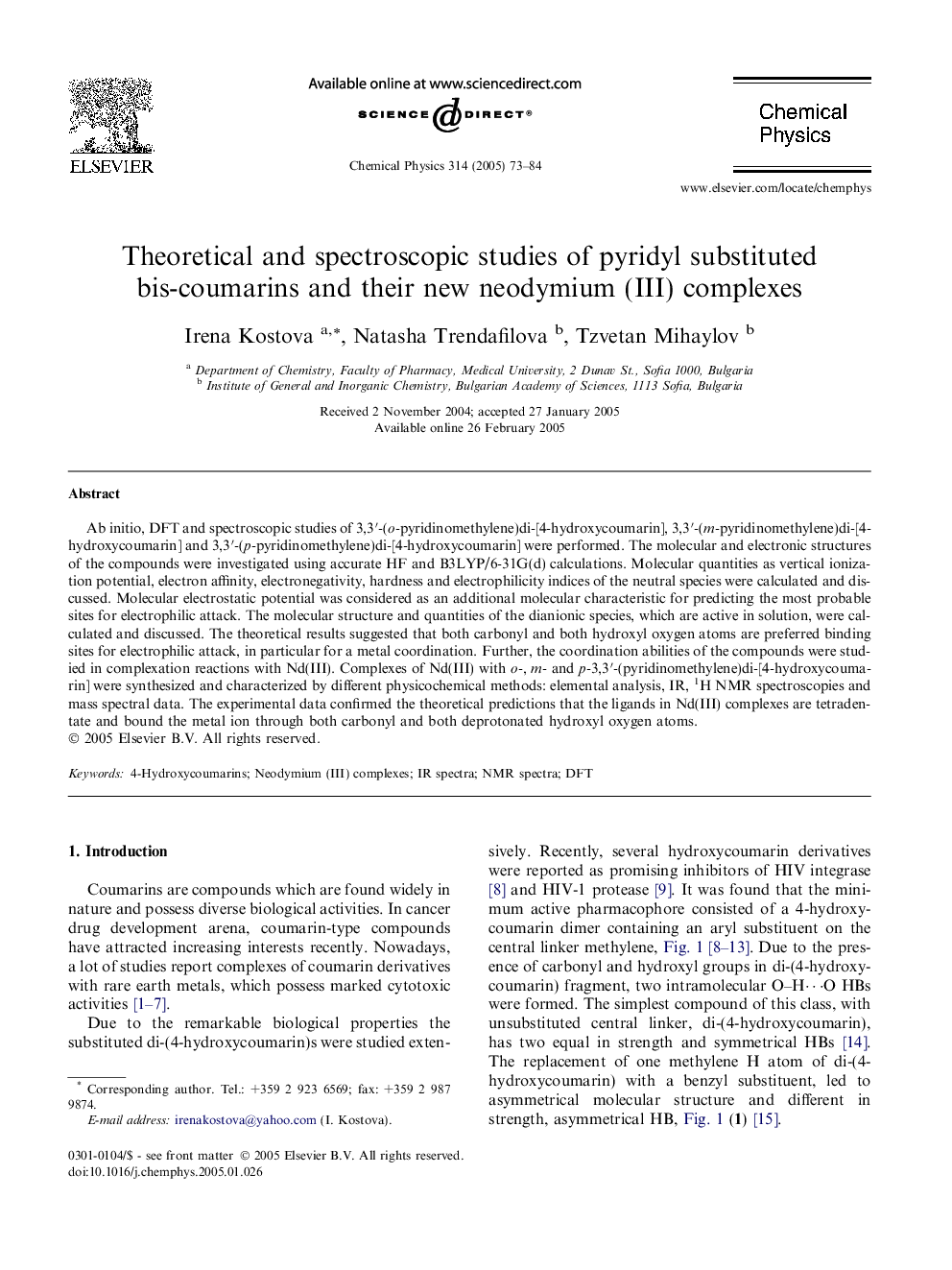| Article ID | Journal | Published Year | Pages | File Type |
|---|---|---|---|---|
| 9575299 | Chemical Physics | 2005 | 12 Pages |
Abstract
Ab initio, DFT and spectroscopic studies of 3,3â²-(o-pyridinomethylene)di-[4-hydroxycoumarin], 3,3â²-(m-pyridinomethylene)di-[4-hydroxycoumarin] and 3,3â²-(p-pyridinomethylene)di-[4-hydroxycoumarin] were performed. The molecular and electronic structures of the compounds were investigated using accurate HF and B3LYP/6-31G(d) calculations. Molecular quantities as vertical ionization potential, electron affinity, electronegativity, hardness and electrophilicity indices of the neutral species were calculated and discussed. Molecular electrostatic potential was considered as an additional molecular characteristic for predicting the most probable sites for electrophilic attack. The molecular structure and quantities of the dianionic species, which are active in solution, were calculated and discussed. The theoretical results suggested that both carbonyl and both hydroxyl oxygen atoms are preferred binding sites for electrophilic attack, in particular for a metal coordination. Further, the coordination abilities of the compounds were studied in complexation reactions with Nd(III). Complexes of Nd(III) with o-, m- and p-3,3â²-(pyridinomethylene)di-[4-hydroxycoumarin] were synthesized and characterized by different physicochemical methods: elemental analysis, IR, 1H NMR spectroscopies and mass spectral data. The experimental data confirmed the theoretical predictions that the ligands in Nd(III) complexes are tetradentate and bound the metal ion through both carbonyl and both deprotonated hydroxyl oxygen atoms.
Related Topics
Physical Sciences and Engineering
Chemistry
Physical and Theoretical Chemistry
Authors
Irena Kostova, Natasha Trendafilova, Tzvetan Mihaylov,
